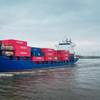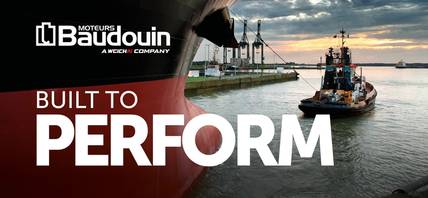Waterborne Technology Platform Welcomes EU STIP
The Waterborne Technology Platform has welcomed the EU’s Sustainable Transport Investment Plan (STIP) which it says is key in facilitating the uptake of sustainable alternative fuels.
The European Commission published the STIP on November 5, setting out a roadmap to accelerate the energy transition of aviation and waterborne transport sectors. The STIP identifies investment needs and outlines measures to make better use of existing EU financing programmes in support of the required investments. It also introduces measures to support the implementation of the facilitating regulatory framework. Finally, the STIP proposes measures to achieve greater market impact through coordination of support at national level and better international collaboration.
The various stakeholder groups offer a wide range of services, including inland waterway transport vessels, ferries, short sea, cruise, and ports.
The STIP underlines the need of various solutions for different categories of ships, including an emphasis on energy-efficiency solutions.
Furthermore, the STIP emphasises the role of small and medium-sized enterprises (SMEs) as backbone of the sector and the diverging operations and fuel needs within the waterborne sector. It calls for a strategy considering the characteristics of all segments of the waterborne sector.
Jaap Gebraad, Secretary General, Waterborne Technology Platform, said: “The Waterborne Technology Platform welcomes the Sustainable Transport Investment Plan. The implementation of zero-emission technologies will only succeed, if sustainable alternative fuels are available worldwide, in sufficient quantities and at competitive prices.
“Our members are currently working on technology roadmaps, which will consider the different categories of ships, the differences between liner and bulk/tramp shipping, as well as the potential of retrofitting technologies and new builds. These roadmaps will provide input to, amongst others, the future research, development and innovation programme of the EU, as well as to the European Competitiveness Fund, which will be critical for deploying economically viable solutions.
“It is interesting to note that calls in the framework of the Zero-Emission Waterborne Transport (ZEWT) Partnership are included as flagship actions in the STIP. To be able to fulfil the measures laid down in the STIP, and to achieve the objectives of the upcoming industrial maritime and port strategies, public-private cooperation modes with all actors of the ecosystem are critical. In terms of research, development and innovation, it is essential to continue the co-programmed ZEWT Partnership with a clear focus on building a resilient, competitive and sustainable waterborne sector. Co-Programmed Partnerships have lean structures and are catalysts of private investments.
“We are looking forward to shaping the content of Horizon Europe, the ECF and the upcoming strategies, jointly with the European Commission Services and Members States with a view to ensuring a flourishing future of the European waterborne sector.”









